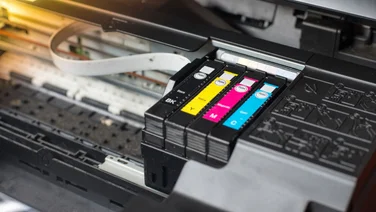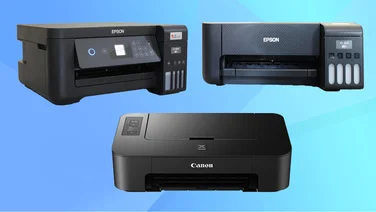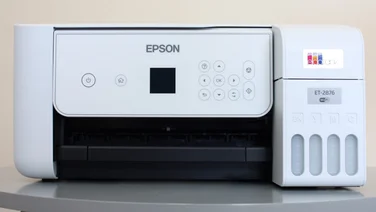To help us provide you with free impartial advice, we may earn a commission if you buy through links on our site. Learn more

The Brother HL-L2360DN is the first device we’ve reviewed from Brother’s newly launched entry-level mono laser printers and multifunction peripherals. It sits roughly in the middle of the mono laser range, providing automatic duplex (double-sided) printing and a wired Ethernet port, but not support for wireless networks. Brother claims a rapid 30 pages-per-minute (ppm) print speed, but the printer’s modest maximum duty cycle of 2,000 pages per month underlines that this is a small or home office device, rather than a workgroup workhorse for bigger firms.
The HL-L2360DN is well suited to a typical home office. It’s a low, square printer that doesn’t require a huge amount of clearance above, meaning that it could fit on a set of shelves. There’s a clattery but functional 250-sheet paper input tray, with a single-sheet bypass above it to feed envelopes or other special media such as pre-printed headed paper. There’s a panel at the back which, when released, provides a near-straight paper path. Unlike many other cheap mono lasers, the paper tray doesn’t poke out and attract dust when loaded with A4 paper.
Reasonably quiet in use, and with fans that stop immediately after a job, this laser shouldn’t shatter the quiet of a home office. It’s also efficient, consuming just one watt when standing by, and quickly dropping to a deep sleep mode that consumed so little power we couldn’t measure it, which is ideal for a printer that will spend most of its time sitting idle.

Typically for Brother, this laser uses separate consumables for toner and drum rather than a single supply integrating both. At 700 pages the supplied toner is somewhat miserly, but you shouldn’t need a new drum for 12,000 pages. Replacement toner is available with a 2,600-page capacity, but even without replacing the drum, print costs work out at around 1.9p per page, and with the drum they’re 2.4p per page, which is much higher than ideal.
The HL-L2360DN wasn’t that fast to start printing, taking 15 seconds to deliver a first page from standby and 19 seconds to do the same from a cold start, but it reached a rapid 23.4ppm on our 25-page text test, and a similarly strong 22.9ppm on our 24-page mixed graphics test. Printing photos in the highest ‘IQ1200’ resolution, actually 2,400x600dpi, was reasonably fast, with two 10x8in mono prints delivered in 18 seconds.
Unfortunately, while we have no complaints about this printer’s text quality, its graphics and photo prints could be much better. While shade control was good, providing a wide range of intensity without obvious half-toning patterns, mid-tones suffered badly from a horizontal banding, and in places sharp boundaries seemed blocky rather than smooth.
While the HL-L2360DN has some strengths, we’d buy the similarly named Dell B2360dn, which has much better print quality, is faster, and, if you print more than 5,000 pages, will repay the extra £30 or so it costs through lower running costs.






